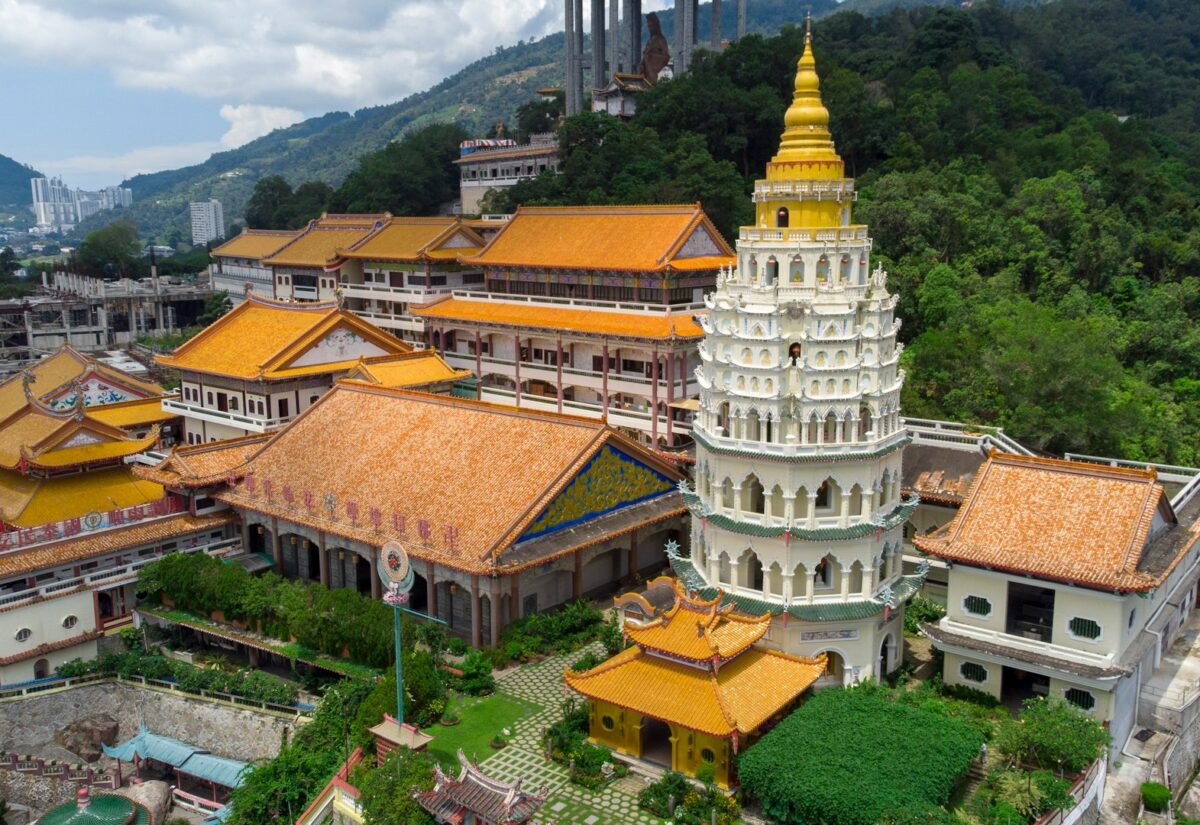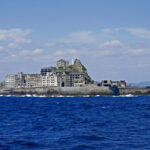 Unsplash/Ong Wei
Unsplash/Ong WeiWhen people think of the British Empire, they often picture vast territories like India, Australia, Canada, or the Caribbean. But the Empire’s reach extended far wider—and deeper—than many realise. Beyond the big names and familiar colonies were lesser-known outposts, enclaves, and protectorates that played decisive roles in trade, military power, scientific progress, and diplomacy. Some existed only briefly, others were quietly folded into bigger territories, but all contributed to shaping the modern world in lasting ways. These forgotten or overlooked British colonies deserve more attention for the outsized role they played in global history.
1. Heligoland (Germany)
This small, windswept North Sea island was ceded to Britain by Denmark in 1814 after the Napoleonic Wars and remained a British possession until 1890. Though tiny in size, Heligoland’s location near the mouth of the Elbe made it a strategic prize for anyone wanting control over northern Germany’s maritime routes. Britain used it primarily as a naval observation post and defensive outpost.
In 1890, Britain traded Heligoland to Germany in exchange for Zanzibar, which further consolidated British power in East Africa. This swap, known as the Heligoland-Zanzibar Treaty, seemed straightforward at the time—but in hindsight, it contributed to the growing tensions between Germany and Britain. The Germans later turned Heligoland into a fortified naval base, which played a key role in both World Wars. Had Britain kept it, the naval balance of power in northern Europe might have taken a very different turn.
2. Menorca (Spain)
The Balearic island of Menorca was intermittently under British control between 1708 and 1802. Britain first captured it during the War of the Spanish Succession, and it became a vital naval outpost for controlling the western Mediterranean. British engineers modernised the port at Mahón, which became one of the largest natural harbours in the region.
Menorca was lost and recaptured multiple times, reflecting its strategic importance. Although it was finally returned to Spain by the Treaty of Amiens, the British left behind administrative reforms, architectural influence, and a lasting cultural imprint. During its time under British rule, Menorca played a key role in balancing French and Spanish naval power in the region.
3. Coromandel Coast (India)
India was central to the British Empire, but the importance of specific regions like the Coromandel Coast is often overlooked. Located on India’s southeastern shore, the Coromandel was an early hub for British textile trade. Fort St George in Madras (now Chennai), built in 1644, became one of the first strongholds of the East India Company.
The coast allowed Britain to establish itself in South Asia long before formal colonisation. It was from here that the British expanded northwards and into the interior, slowly laying the groundwork for the Raj. The region also helped facilitate British influence in Southeast Asia, with its maritime routes connecting India to Malaya and beyond.
4. Saint Helena (South Atlantic)
Best known as Napoleon’s final place of exile, Saint Helena is more than just a historical footnote. This remote island, acquired by the East India Company in 1659, served as a critical mid-ocean supply station for ships en route to India and China. Its location made it a linchpin in global communication and shipping networks.
Saint Helena had no indigenous population and became a miniature colonial society complete with forts, plantations, and political prisoners. During the height of the British Empire, hundreds of ships stopped there annually. Its importance only declined with the advent of steamships, which made other routes more efficient. Yet the island remains a UK Overseas Territory and a symbol of the logistical reach of empire.
5. British Honduras (now Belize)
British Honduras was the only British colony in mainland Central America, surrounded by Spanish-speaking territories. Formally established in the 18th century, it became a major logging hub—especially for mahogany and other hardwoods. British settlers, many of them formerly involved in piracy, slowly built a colonial economy around timber extraction.
Despite its small size, British Honduras was geopolitically important. It allowed Britain to counterbalance Spanish influence in the region and provided an English-speaking foothold on the Yucatán Peninsula. It also became a point of friction with neighbouring Guatemala, a dispute that continues to echo in regional politics. Today, Belize is the only country in Central America where English remains the official language—a colonial legacy that still shapes its identity.
6. Tangier (Morocco)
Tangier was a British possession for just 22 years—from 1661 to 1684—but its impact was significant. The city came into British hands as part of the dowry of Catherine of Braganza when she married Charles II. Britain hoped to develop Tangier into a major naval base and trade hub at the mouth of the Mediterranean.
The city was fortified extensively, but constant attacks by local forces, combined with high maintenance costs, made it unsustainable. Britain evacuated and abandoned Tangier in 1684. Despite the withdrawal, the British effort marked an early attempt to gain a lasting presence in North Africa. The experience helped shape later imperial strategies in the Mediterranean and North African regions.
7. The Ionian Islands (Greece)
From 1815 to 1864, Britain administered the Ionian Islands—seven islands off the western coast of Greece—under the collective title of the “United States of the Ionian Islands.” Although nominally a protectorate, the islands were effectively run by British officials and garrisoned with troops.
The islands were used as strategic listening posts for naval movements in the eastern Mediterranean and as a cultural testing ground for British-style governance. Educational reform, legal codes, and infrastructure projects all left a long-term legacy. The islands were eventually ceded to Greece as a goodwill gesture following the enthronement of a pro-British monarch.
8. Bencoolen (Indonesia)
The British controlled Bencoolen, located on the southwest coast of Sumatra, from the late 1600s until 1824. Initially acquired for its pepper trade, it never developed into the economic powerhouse that British leaders hoped for. Constant rivalry with the Dutch and the region’s relative isolation made it hard to maintain.
Yet Bencoolen proved crucial in other ways. It was here that Sir Stamford Raffles—who would later go on to found Singapore—refined many of his ideas about trade, governance, and urban planning. His time in Bencoolen laid the groundwork for the far more successful British colony in Singapore, which became a cornerstone of the empire’s Asian trade network.
9. The Falkland Islands (South Atlantic)
Although now well-known due to the 1982 Falklands War, the islands were long dismissed as remote and unimportant. Britain established a permanent settlement there in 1833, and the Falklands became a key naval and coaling station for ships rounding Cape Horn before the Panama Canal was built.
During the 20th century, the Falklands became strategically important again due to their location near the Antarctic. The 1982 war, which saw Britain repelling an Argentine invasion, had global ramifications—reviving British patriotism, reshaping Thatcher-era politics, and reasserting Britain’s ability to project military power globally. Today, the islands also support British territorial claims in Antarctica, underlining their continued geopolitical significance.
10. Penang (Malaysia)
Penang was acquired by the British in 1786 and became one of the original Straits Settlements, along with Malacca and Singapore. Strategically located along the Strait of Malacca, Penang served as a crucial waypoint for trade between India and China.
It also became a melting pot of cultures—Malay, Chinese, Indian, and European. Under British administration, it was used as a free port and rapidly developed into a commercial and administrative centre. The colonial infrastructure and diverse society that developed in Penang laid much of the foundation for the success of later British territories in Southeast Asia, especially Singapore.
These lesser-known British colonies don’t always make it into the main narratives of empire, but each played a pivotal role in shaping the modern world. Whether through trade, warfare, politics, or science, their influence far exceeded their size or duration. The British Empire’s global reach didn’t just rest on its most famous holdings—it depended on these smaller, strategic places that helped hold the whole thing together. They are the hidden gears of an imperial machine that changed the course of world history.



